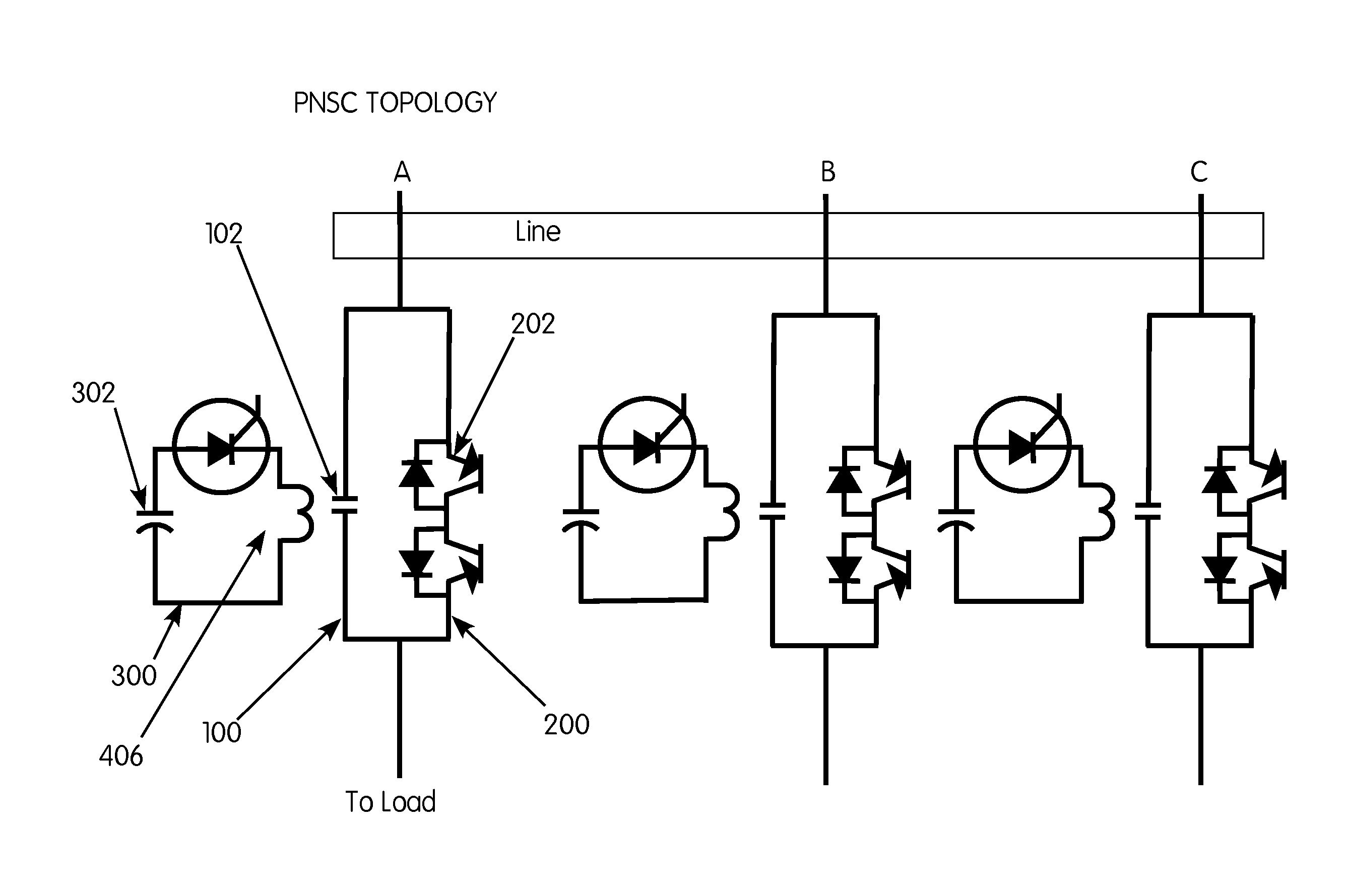Graded resistance solid state current control circuit
a solid-state current control and resistance technology, applied in the direction of contact mechanisms, emergency protective circuit arrangements, etc., can solve the problems of preventing the circuit breaker upstream from the fault from opening, collapsing, and reducing the accuracy of detection
- Summary
- Abstract
- Description
- Claims
- Application Information
AI Technical Summary
Benefits of technology
Problems solved by technology
Method used
Image
Examples
Embodiment Construction
[0039]The operation of the switching module of the power node switching center PNSC consists of three main functions. These are: (1) detection of a fault current; (2) commutation of the current from a path traversing a mechanical contactor to a path through a power electronics switch; and (3) interruption of the fault current by opening the power electronics switch.
[0040]The basic topology of the PNSC switching module is shown in FIG. 3. FIG. 3 shows the switching module in three phase configuration, in which separate circuits for all three phases would be housed in a single enclosure. This is not meant to be a limitation of the invention, however, as any number of phases could be housed together and still be within the spirit of the invention.
[0041]The preferred embodiment of the PNSC switching module consists essentially of two parallel current carrying paths 100 and 200 for each phase. Path 100 includes mechanical contactor 102, and is the primary current carrying path during nor...
PUM
 Login to View More
Login to View More Abstract
Description
Claims
Application Information
 Login to View More
Login to View More - R&D
- Intellectual Property
- Life Sciences
- Materials
- Tech Scout
- Unparalleled Data Quality
- Higher Quality Content
- 60% Fewer Hallucinations
Browse by: Latest US Patents, China's latest patents, Technical Efficacy Thesaurus, Application Domain, Technology Topic, Popular Technical Reports.
© 2025 PatSnap. All rights reserved.Legal|Privacy policy|Modern Slavery Act Transparency Statement|Sitemap|About US| Contact US: help@patsnap.com



